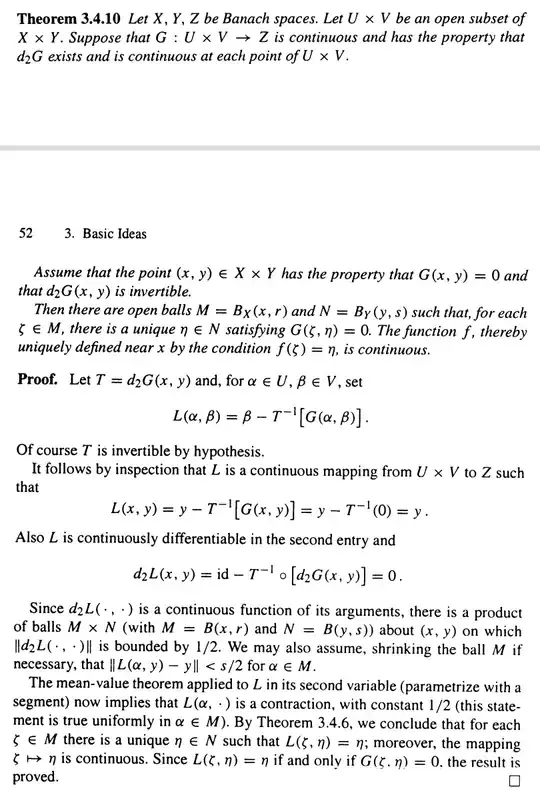I was recently reading a book about the implicit function theorem (IFT): The implicit function theorem: history, theory, and applications, and before that I learned that Peano's existence theorem can be used to prove the IFT (the existence of implicit functions); in this book, an idea of using the IFT to prove Peano's existence theorem (PET) is given:

Theorem 3.4.10 mentioned in it is as follows (with its proof):

where $d_{2}G(x,y)$ is defined as

Apart from this book, I haven't found other papers or books describing IFT to prove PET (maybe this view is of little value?), so I have to consult you here.
My questions are as follows: Is this proof of PET using IFT correct? If correct does this mean that IFT is equivalent to PET?
Certainly this is not what people "mean" when they say two theorems are equivalent to one another, but I think of this as being morally what they are saying [the same way as a theorem in a non-set-theory paper "is" morally its formalization in, say, ZFC].
– Anurag Sahay Jul 21 '22 at 15:52